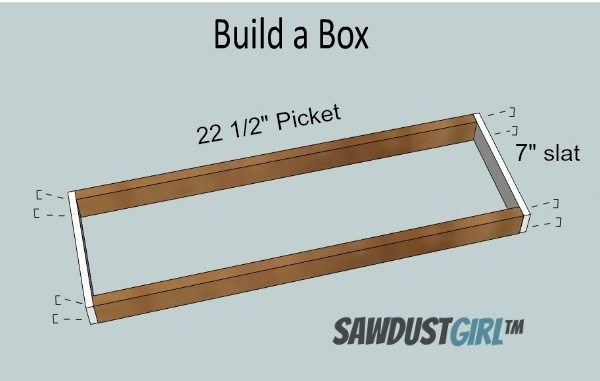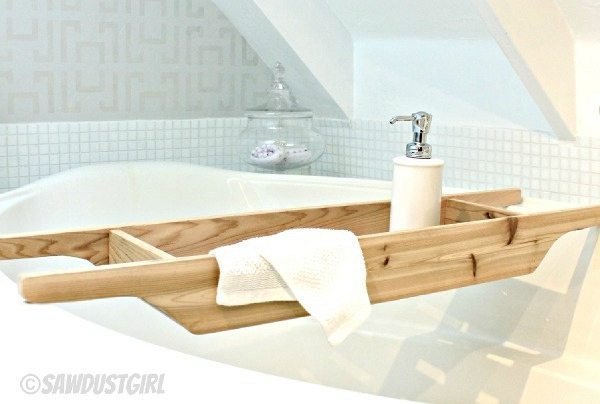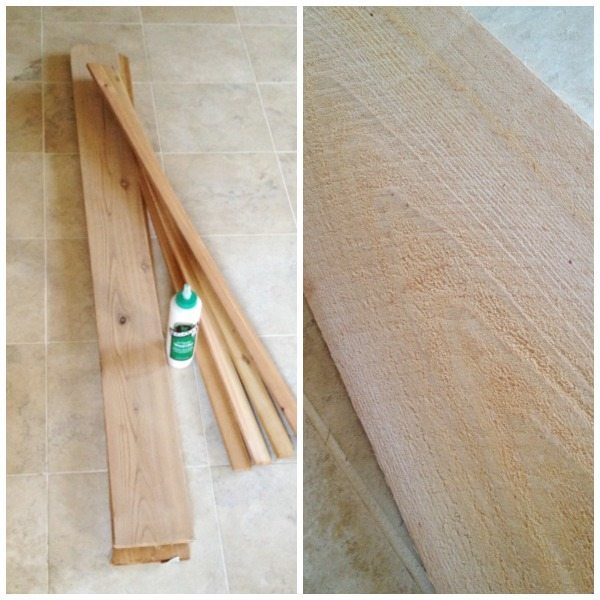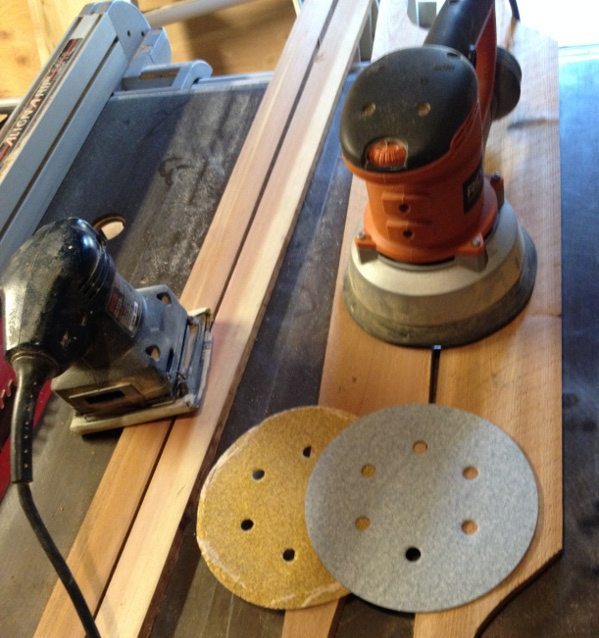
Materials:
- 1 Untreated Dog Eared Cedar Fence Pickets 5 1/2″ x 5′
- 2 Cedar Lattice strips 1 1/2″ x 4′
- Waterproof Wood Glue
- Galvanized or stainless steel staples

Fence pickets are not the highest quality lumber, so try to find boards that are as straight and as smooth as possible. Avoid boards that have loose knots, are warped, splitting, etc. When I started on my second bath caddy I discovered that Home Depot does not always carry the cedar lattice, so I had to get my lattice from a lumber yard. Most lumber yards that carry fencing will have both the lattice and pickets. You might want to make a few calls in your area to find who has what, and cut down on the run around.
Step 1: Prep the wood

It is easier to do the major sanding before cutting this lumber. Start with a very rough grit, 36 or 50, to take off the scurf marks and really rough stuff. Then graduate up through the grits until they are nice and smooth. Cut all sides of the wood to give yourself clean edges and remove any loose knots or damaged wood.
Step 2: Make Cuts

Here is the cut list for the caddy that I made, My tub has a strong oval shape so I have one handle that is 2 inches longer than the other. Measure the tub that you are making your caddy for and adjust as needed. Rip two strips of the fence picket that are 1” and cut to the desired width of your tub handles. Rip another strip that is 1 1/2” wide and cut it into two pieces that will be the length of the box of your caddy. Cut the lattice into 7” slats. For a 22 1/2″ box you will need 12 slats, but adjust to your specs.

Decide if you want your handles rounded or square. I like mine rounded, but depending on the tub the square can look cool too. Square or rounded, make sure to sand all edges and surfaces and clean up any splinters from cutting.—Nobody wants to get a sliver in the bathtub!
Step 3: Assembly
Start by creating the caddy box. Staple the slats to the sides and make sure to get the box square and flat. I don’t recommend using brad nails on the lattice as it will split easily.

Use waterproof wood glue and galvanized or stainless staples, these will stand up to the water and humidity of a bathroom. If you don’t have galvanized staples you can just glue and use clamps and/or weights but you will need to wait for the glue to dry up quite a bit between steps—and you know how much I love waiting for glue to dry! It does give you a cleaner look without the staples though.

Note: when making this caddy I cut the ends at a 45 degree angle. I thought it would look cool, but after finishing I decided that I would much prefer for the box to just be square. This is why the final pics look a bit different from the plans. I think it’s much better to do square ends, it will look cleaner and it’s a little easier.

Now glue and staple all of the lattice slats along the bottom of the caddy box. To get perfectly spaced slats cut scraps of wood to use as spacers (1/2 inch for given dimensions).
Step 4: Attach the handles
Center the caddy box onto the handles, glue and clamp in several places or use weights to secure the box to the handles.

For this step I used glue only, as I didn’t want staples, nails, or screws in the top of my handles. If you want, you could nail or screw up from the bottom, but be very careful not to go too far up or get crooked and mar the face of your handles or box. The wood glue alone will be plenty strong as long as you get it tight together while it dries.
Step 5:
Once the caddy is dry, do a final sanding just to round off the edges of the slats and clean up any glue or clamp marks. You know, just make sure that it is nice and smooth everywhere because of that whole NO SLIVERS IN THE BATHTUB rule.
The original plan can be found at https://sawdustgirl.com
 [email_link]
[email_link]



























